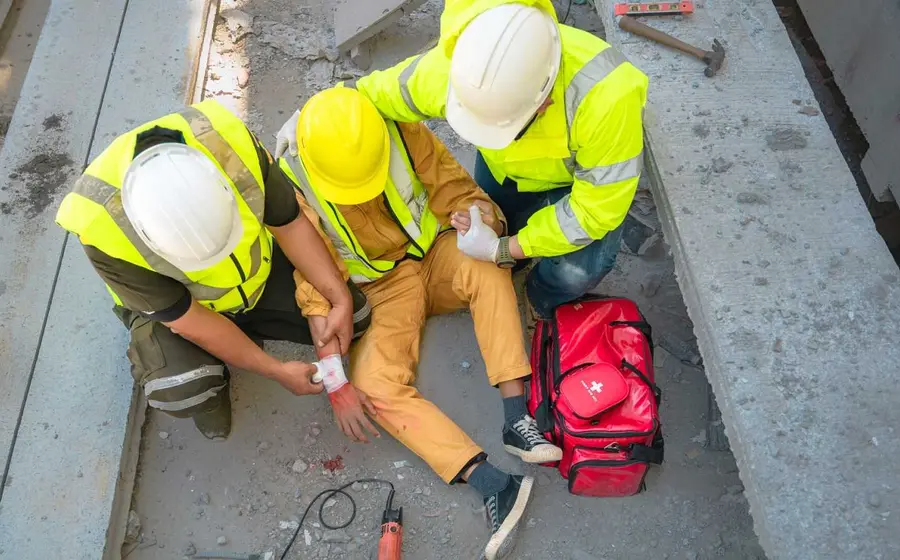Safety and prevention on construction sites
Emergency services for engineering and construction
Over the past few weeks, there have been reports of several accidents and, sadly, even one death on construction sites. These incidents are particularly shocking because they are not isolated events, but rather a reflection of the significant risks inherent in the sector, which demand, and indeed require, structural changes in occupational safety, regulations, technical training, and professional culture.
Accidents of this kind not only cause irreplaceable human losses, but also highlight systemic failures in supervision, training, compliance with standards, and corporate social responsibility. In a context where Mexico faces a parallel 1.5% decline in the construction sector by 2025 and where attempts are being made to revive the industry through events such as Expo CIHAC 2025, the magnitude of the human costs serves as an urgent call to reorder priorities.

To ensure that these tragedies do not continue to occur:
- First, it is essential to strengthen prevention protocols. Safety standards on construction sites must be clear, enforceable, and monitored by independent bodies. It is not enough for regulations to exist; their implementation must be genuine, enforced, and audited. In many cases, workers lack sufficient training, adequate equipment, or decent conditions to perform high-risk tasks.
- Second, continuous training and certification of technical skills are key to reducing accidents. Investing in courses, simulations, rescue training, and a culture of self-protection is not an expense, it is an investment. Across the country, universities and technical institutes play a key role as hubs for practical training in safety, structural engineering, and best practices.
- Third, technical supervision and the role of the resident engineer must be strengthened. At each stage of the project, from the foundations to the finishing touches, there must be a technical manager with veto power, formal authority to halt work in dangerous conditions, and a broad mandate to ensure compliance with standards. Just as requirements are imposed on the contractor, they must also be imposed on the professional responsible for technical oversight.
- Fourth, the professional culture must evolve. In many construction projects, there is still a mindset of “doing it quickly” or “saving costs” that has cost lives. Changing this mindset involves creating incentives for safe construction, publicly recognizing companies with a good track record, rigorously punishing negligence, and valuing systems that prioritize safety over speed.
- Fifth, technological innovation can help. The use of real-time monitoring, fall detection sensors, digital documentation systems on site (BIM models, for example), and permanent surveillance contribute not only to improving efficiency but also to identifying risks before they turn into tragedies. These tools must be integrated into the project from the design stage, not as late additions.
- Sixth, the social responsibility of those involved in the project is essential. Construction companies, contractors, suppliers, construction authorities, and regulatory bodies must feel jointly responsible for the well-being of workers. An accident should not be seen as a “coincidence,” but as a warning of shared systemic failures.
- Seventh, the regulatory environment must keep pace. Laws on public works, tenders, civil liability insurance, and technical standards must be periodically adjusted to incorporate lessons learned in the field, technological advances, and international best practices. Local and state governments must also make safety an essential criterion for eligibility when granting permits and contracts.
- Eighth, dissemination and awareness-raising are vital. Every death or serious injury should be used as input for technical dissemination: case studies, forensic analyses, conferences, congresses, and publications that draw on experiences to reinforce training and prevention. At the local level, engineering colleges, associations, and public bodies should lead this process.
- Ninth, accountability must be effective. When a fatal accident occurs, it must be investigated transparently, responsibilities identified, and exemplary sanctions applied when there is technical or administrative negligence. This builds trust, deters bad practices, and sends a clear message: safety is non-negotiable.
- Tenth (and perhaps most importantly): human life must take precedence over deadlines, costs, or profits. At the heart of mechanical, civil, and construction engineering is the purpose of building safely, durably, and functionally. If that purpose does not include safeguarding the human capital that makes it possible, then we lose the deeper meaning of our profession.
Recent accidents on construction sites not only reflect a human tragedy, but also the urgent need to rethink the culture of safety within the construction and engineering sector in Mexico. Beyond complying with standards or protocols, the real challenge lies in embracing safety as an essential value, integrated into every phase of the project: from design and technical supervision to execution and staff training. Only with a collaborative vision, where engineers, contractors, developers, and authorities assume their shared responsibility, will it be possible to build not only solid structures, but also more humane, sustainable, and dignified work environments. In modern engineering, protecting life is, and must continue to be, the most important foundation of any construction project.